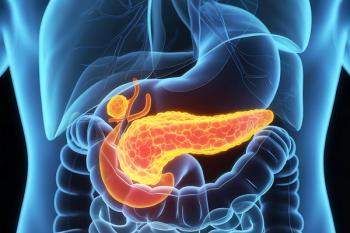
- LCGC Asia Pacific-03-01-2011
- Volume 14
- Issue 1
Developing Method Development
If the art of method development is dying what can we do about it?
The most common complaint I hear from the chromatography community at conferences is the lack of expertise in method development amongst young (and not so young!) scientists.
The reasons for this decline include an over dependency on the expertise of chromatography vendors to solve method development problems, a bewildering array of new stationary phases, a lack of time to experiment with different parameters and elder scientists with years of knowledge being replaced by less experienced staff.
Fundamentals of the technique are also not well understood. There is a real lack of knowledge in approaching method development in a logical and non-random way. As instrument technology, software and automation have evolved, an alarmingly large number of project managers seem to believe that the instrument is so easy to use it must be easy (and fast) to develop a new method. No need for all that theory and experimentation. A bit like thinking that buying a professional camera will turn you into David Bailey overnight.
The evolution of technology in chromatography obviously takes some skills out of analysis but the most effective separations will never be achieved if staff don't know how to optimize the methods they work with or solve problems when they arise. Automated development platforms definitely have their place but this lack of insight in fundamental principles will cause problems when the automated platform does not give a clear direction on how to progress with more problematic separations — which appear more often than everyone would like.
There are a whole host of other reasons for the brain drain in method development. However, at the root of the problem is a bottleneck in the exchange of knowledge between experts and the uninitiated, alongside a lack of understanding in fundamental chromatographic principles. But as any management guru will tell you (usually for a large fee): "Mangers don't want to hear about the problems: they want to know the solutions!"
To address this decline in expertise LCGC has some practical solutions to bridge this knowledge gap: CHROMacademy was launched to educate analysts in the fundamentals of chromatography and help them understand the process and principles behind successful method development at their own pace.
This innovative e-learning suite also allows managers to assess and develop their employees' skills as part of a continual professional development programme. The recent live webinars on Developing Better Methods for Reversed Phase HPLC proved that the demand for this type of information is there. Upcoming topics in 2011 include method development advice on fast GC; a whole series on LC–MS, featuring method development and optimization tips for electrospray API techniques and other mass analysers; Quallity by Design approaches to HPLC method development; and several webcasts on advanced column selection techniques.
The site offers much more than a section from a textbook transferred to a digital format. There are over 2000 separate animations to illustrate key concepts, interactive tutorials and assessments and regular educational webinars. Companies with less time and money to send staff off on week-long training courses are looking seriously at interactive e-learning. With a range of support options to track staff's development, it is a convenient and cost-effective way forward. Go to
CHROMmunity — the rapidly expanding networking site for chromatographers — was set-up to stimulate debate and exchange information amongst the chromatography community and now has over 3000 members — and rising. If you have a problem (or solution) on developing a method you can easily interact with other members consisting of your peers and experts from industry and academia. There is even a detailed prescription of the problem in a lively discussion called: The Art of HPLC Method Development is Dead!
In the IT community, software developers first turn to forums like this to discuss bits of code they are having difficulties with and problem-solve on a minute-by-minute basis. As the digital generation enters the laboratory, CHROMmunity aims to become the first port of call for quality practical information. Why not join the debate by signing up on
If there are any topics you particularly want to be covered — or if you have the answer to problems that are commonly encountered — please let me know about them. With your input we can bring method development back to life again.
I look forward to hearing your comments.
Alasdair Matheson
Editor – LCGC Asia Pacific (Print)
Articles in this issue
almost 15 years ago
Hydrogen Carrier Gas and Vacuum Compensationalmost 15 years ago
The Preparative Use of Flow Field-Flow Fractionationalmost 15 years ago
The Increasing Role of Superficially Porous Particles in HPLCalmost 15 years ago
Analysis of Inorganic Anions by Capillary Electrophoresisalmost 15 years ago
Food Metabolomics: Fact or Fiction?Newsletter
Join the global community of analytical scientists who trust LCGC for insights on the latest techniques, trends, and expert solutions in chromatography.





